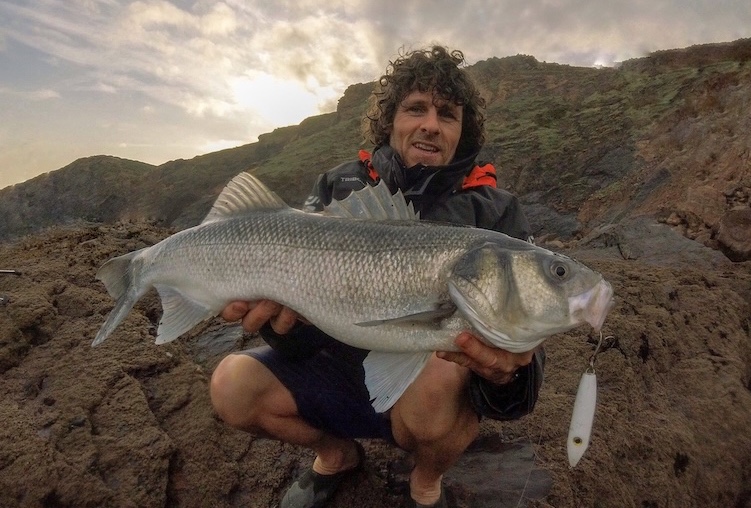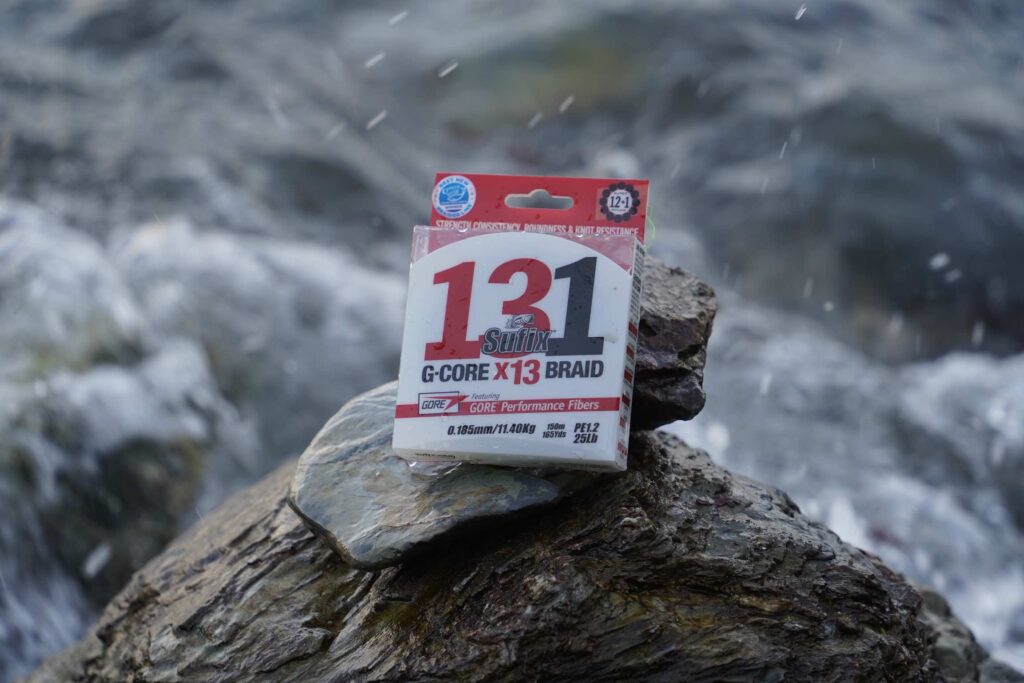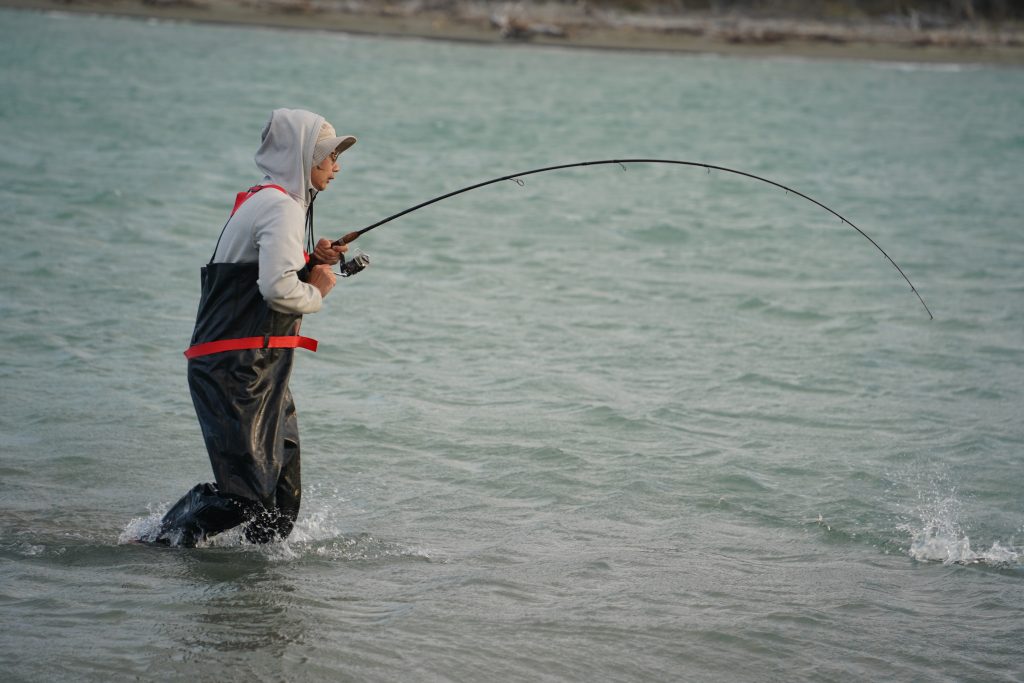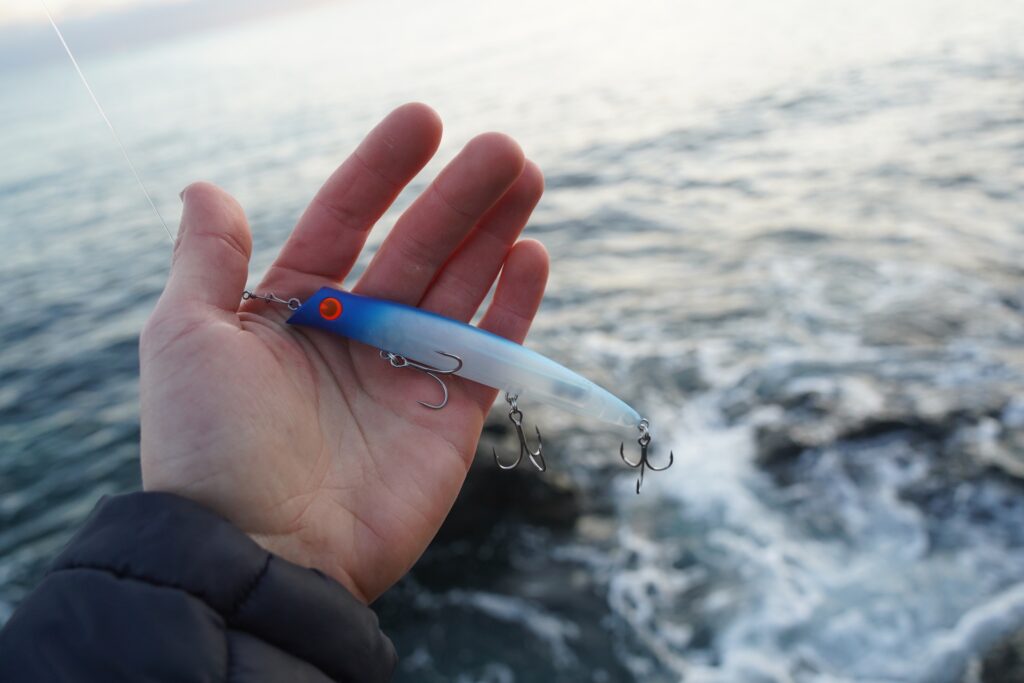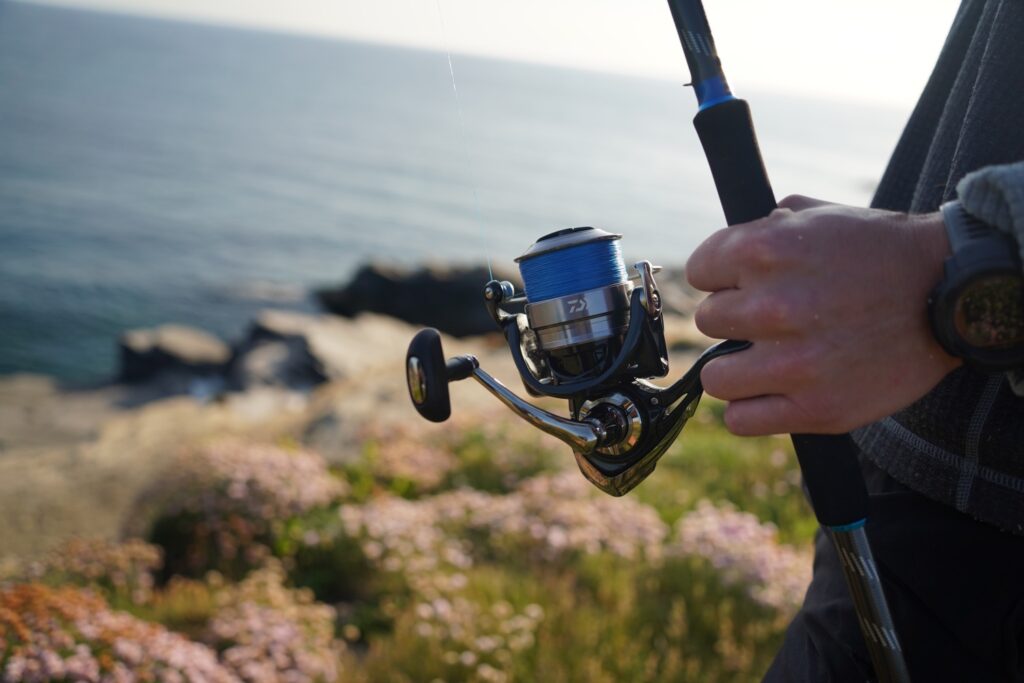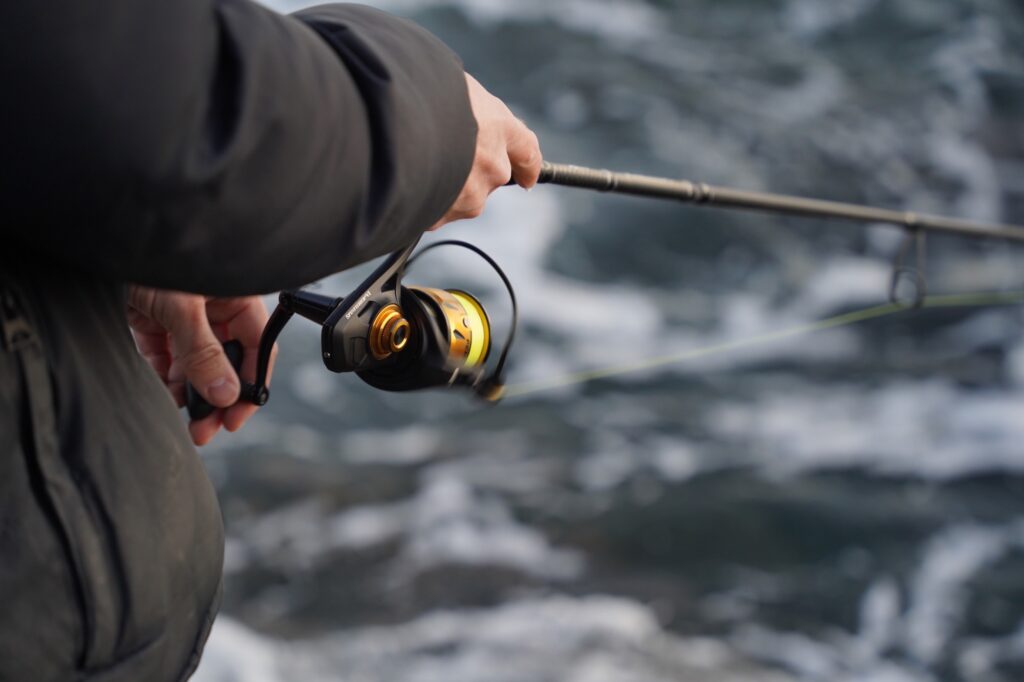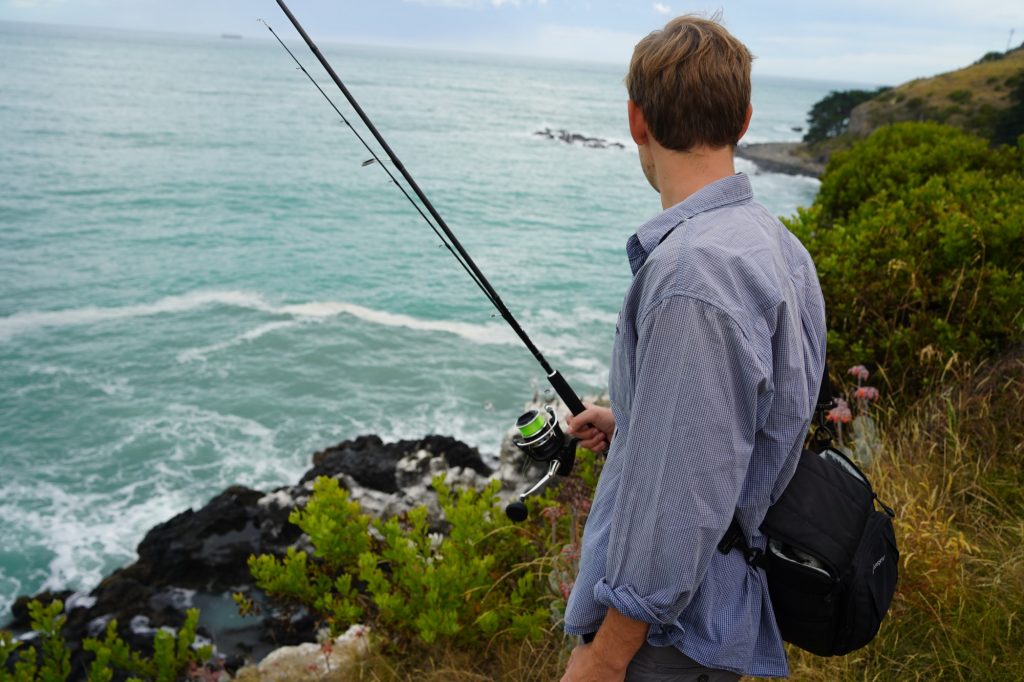
A Brits Guide to Travel Rods
If you have ever been looking into calm pristine waters, with colourful fish buzzing around, or walked along a jetty and seen large fish lingering around the boulders, you will know the regret that comes from not having brought a fishing rod.
Travel rods make it possible to fish more often. If you can slip something subtly into your hold luggage, or keep it in the boot of a company car inconspicuously – that’s a game changer…
The trouble is – and it’s a big one – travel rods and telescopic rods are more prone to snapping…
The majority of travel rods and certainly telescopic rod make significant compromises in the rod blank. This is because each joining point can be a weak point. It can also be a ‘flat spot’ on the rod. That means when the rod is bent, it doesn’t bend evenly throughout the rod. This might not sound like a big deal but it can ruin the action. Despite this, there are good options if you know which rods to go for.
Below is a gif of me yanking a nasty beach caster to reveal its flat spots that limit the rods action – the same thing happens with lure rods that are multi-piece and not super high quality. The beachcaster in question cost over £100.
In this article, we’ll look at some rods at different price points and share what we know about each. Feel free to reach out at reuben@fishmag.co.uk or via the chat icon if you have questions regarding a specific trip. We may be able to help with location advice also. Let’s start by looking at storage options…

Best rod tubes for travel
When travelling by plane you have two options when it comes to fishing rods:
1) Taking a specialist hard rod tube with your fishing rod, wrapping in bubblewrap inside to prevent movement & paying for extra hold luggage
2) Having a shorter travel rod that can fit inside a suit case
With option 2, you may need to choose between an extra Hawain t-shirt and your fishing gear… There’s only one solution. Pack the rod and rock that Hawaiian shirt on the plane instead! In the product description, it often says the rod length when packed down. It can be worth measuring your suitcase from top corner to bottom corner to see what the longest rod you can get in there is.
There’s nothing worse than being a great beach mark and having a rod too short to cast beyond the surf – I’ve been there when using a 9ft rod when I needed something longer and regretted it big time.
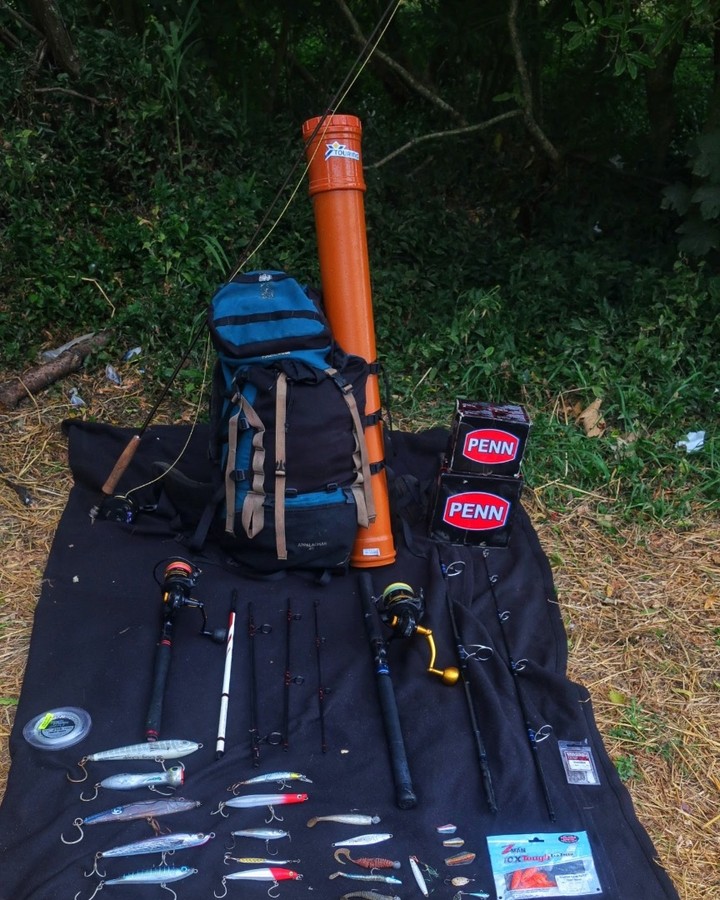
Quick anecdotal tips by location from fishmag’s editor
Fishing in Mexico
Fishing kit in Mexico is much more expensive than in the UK. I found it to be roughly twice the price. You have the Gulf of Mexico on the North coast, the Caribbean on the east and the Pacific on the west coast. I don’t know anything about the Carribean or the Gulf of Mexico, but did fish several locations along the length of Mexico’s pacific coast over a long period. It is essential to have a rod of about 11ft – basically a surfcasting rod. If I was to go back, I’d reach for a very long lure rod of 11ft that could cast up to about 80g. I’d use 30lb braid and and I’d bring with me some large white plugs and white jigs – white seemed to be a popular colour with locals. I’d also bring plenty of surface lures – big ones. The last thing you want is a 7-8ft rod on the Pacific coast. It’s not a land of harbours like the sheltered bays in Cornwall where I grew up. In terms of cost, bringing a rod that long with you on a plane is probably worth it depending on the cost of an extra item of hold luggage for you. Buying a good rod out there would be several hundred pounds. You’re definitely going to want to bring a decent high-end reel with you, spooled with braid, a spare spool of braid and a load of lures.
Fishing the USA
Honestly, if you’re going fishing in the USA you don’t want to buy a travel rod in the UK, probably. The market they have out there is so much bigger and more exciting, that it would be a lot more fun to buy a rod when you’re out there if you have time to visit a high-end tackle shop. You might save money by packing a reel and line, though. I’m not sure on the price comparison for comparable products in the UK vs US. Watch out for ‘American Made’ rods though, they aren’t necessarily better than some of the higher end rods made in China and are generally inferior to those made in Japan. They do still have a lot of tat out there, so don’t let the overexcitement get to you. Stay shrewd…
Fishing Australia & New Zealand
Ok – this is going to be an exciting trip, and you’re going to need more than one rod. For New Zealand, something around 9ft that casts about 50g is useful for their most common sea fish – the snapper. There are literally snapper everywhere up north and easy to catch – similar to our wrasse only they taste delicious and grow to 20lb from the shore. On the south island, the same set up will do you for Kaiwai, which are very plentiful in the estuary mouths – actually at around 60% of their original pre-industrial population. On the south island, the sea fishing from the shore is generally not nearly as good as the north island and you might want to swap that rod out for a much lighter trout rod or even fly rod. Right down at the bottom of the south island you can catch Blue Cod with the same rod already mentioned. The second outfit you’ll need is something much heavier for the King Fish. Nothing on this page is that relevant for these species unfortunately, I can only recommend you check prices for high end spinning reels before you go to check where it will be cheapest to buy something with a serious drag. E.g. Daiwa Saltiga for the Kingfish (not necessary to go that high end of course, but something with a very decent is necessary).
If you’re bottom fishing with baits – a beachcasting rod that casts up to 6-7oz would be needed depending on location. There is no ‘scratching’ option with all the sting rays etc about. That’s too big a topic to delve into here, but suffice to say the fishing is going to be insane, especially around Northland. It’s getting my buzzed even thinking about it. Reach out at reuben@fishmag.co.uk for more personalised advice, I spent 2 months solid fishing the whole of NZ with guides.
Fishing the Mediteranean
It can be misleading when you see on social media or the internet people catching monstrous fish in locations like the Med from the shore. Generally speaking, most of the fish in the Med are small, and best targeted with very light gear. It’s a lot of fun bringing LRF gear to holiday locations with piers and lines of boulders, where the fish tend to be overeager to smash anything bright coloured with an aggressive action.
There are some very big species too – often targeted at night time – if you have specialist knowledge on how to find and effectively target them. The locals that are catching these fish normally have everything dialled in – the tides, the time of year, the lures, the actions, the tackle, even the recent tip-offs from friends on commercial boats etc. The best way to get into those kinds of fish is to hire a guide or do a large amount of prior research.
Essentially, if it’s a family holiday, we recommend going for super light tackle. If you’re bringing a rod that casts up to 80g, it will be necessary to do quite a bit of research to have good chances. Morocco may be different, because it has access to the Atlantic as well as the Med and may not be as overfished (I’m not sure).
Fishing the Canary Islands
The Canary islands have far superior fishing to the Med. They also have species of a huge range of sizes from the shore. If it’s a family holiday and you’re going to be hanging around marinas and boulder outcrops – something like the light shore jigging rods from Major Craft that we look at later in this article is perfect. A rod that casts 30g for your smaller species, where there is still a chance at something larger. I’d recommend scaling up your reel to the largest size that will fit on your rod comfortably. You don’t really want to have a 1000 or 2500 size reel and hook something 10lb+ if you can help it!
If you’re on a dedicated fishing trip to the Canary’s there is so much potential, and the exact rod you need is going to depend on what you’re targeting and where. A rod casting up to 60-80g is going to be a lot more versatile out there for working bigger hard lures etc for the larger species. We’ll hopefully put together a full guide on this in the future for FISHMAG readers.
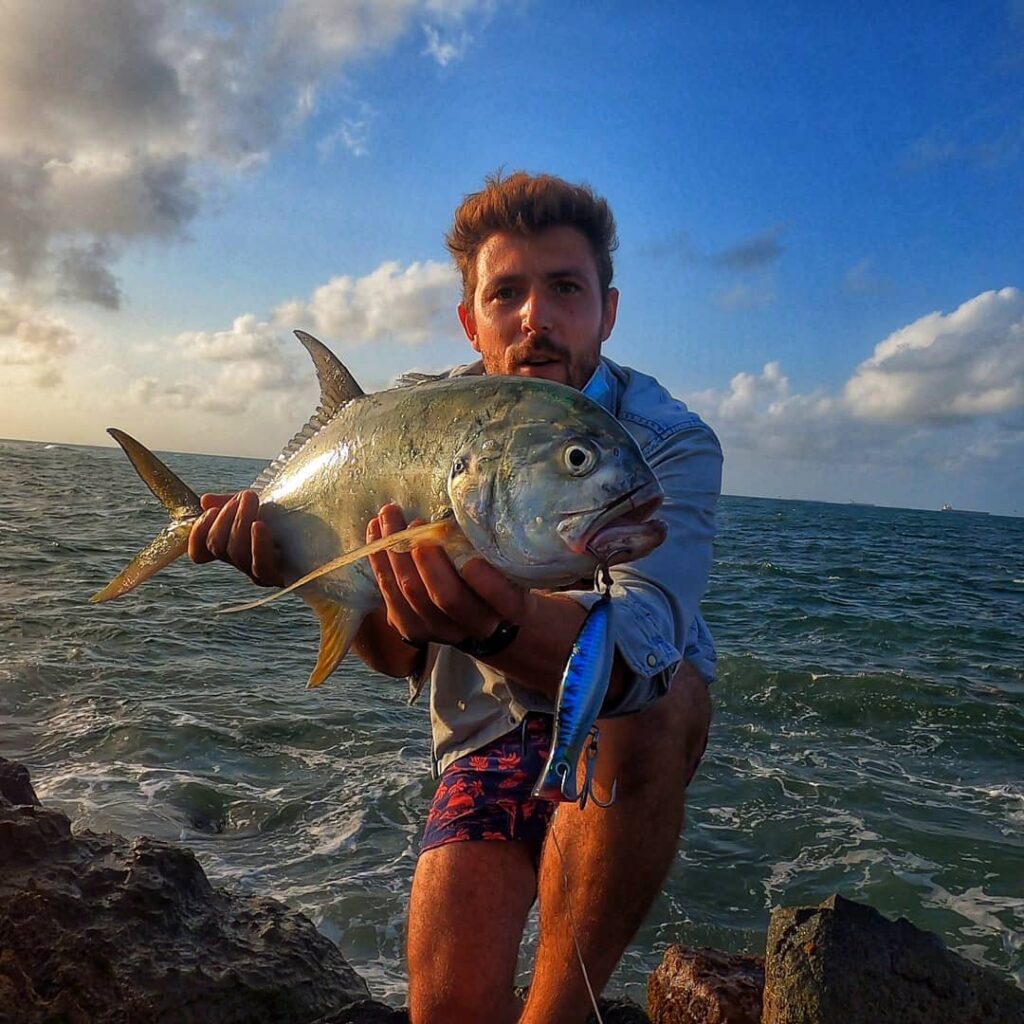
@thefishingbackpacker and others I’ve met have had great success while fishing completely alone. These people have in common that they are very good at finding locals that will share tips with them. A change in lure colour, a change in timing, a change in tide, a change in retrieval – it can change your results big time when in foreign lands.
Under £100
Travel rods under £100 are going to be pretty limited pieces of kit, just because making a good travel rod is more expensive than making a decent two piece rod. As mentioned above, these rods are highly likely to be prone to breakages during the cast or while fighting fish. My personal opinion? If you’re going on a dedicated fishing holiday, invest in a good travel rod and if it’s a family holiday where you’re going to be doing some fishing, just bring a reel, line etc and then buy a cheap rod when you’re out there. It’s a good way to chat to locals in the tackle shop anyway. Then, at the end of your trip, you can gift the rod to a local kid or sell it back to the tackle shop for maybe half what you paid for it. It’s likely this could be cheaper than paying for a travel rod case and transport for a low quality rod. I’ve done this a couple of times.
However, it’s a mistake to think that other countries will always be cheaper than the UK. I used this strategy in both New Zealand and Mexico, and in both cases it would have been obscenely expensive to buy a decent rod. I ended up with a compromise rod and regreted it. A rod that would cost £100 in the UK was roughly double in Mexico. Even in Turkey, reels from Daiwa and Shimano were more expensive in my experience. So, it might be worth checking out how much a cheap rod costs where you’re going to make sure the strategy above will work out. Depending on the country it could be a perfect strategy.
Let’s get to the rods!
£100-200
Penn Overseas XT Inshore Lure Rod 8ft 15-40g – available here
This is one of the rods that @thefishingbackpacker told FISHMAG he travelled the world with, with great success. He told us it was a robust rod and he was using a lot of hard lures and jigs with it. The rod has a super fast action, so the recovery is quick. We think this is a very solid option as a dedicated travel rod, particularly if you’d prefer something slightly more rugged, with a slightly thicker blank. Perfect if you’re going to be beating your kit up a fair bit. The rating of 15-40g is within that ‘standard UK bass fishing range’ but is plenty for species up to 5-10lb. If you’re used to using Japanese blanks that are super thin etc, this won’t feel as slick as that, but then if you’re travelling around in a van or staying in hostels you may not want a noodle stick with you!
Penn Overseas II Offshore Casting, 7’8″ to 200g here and 8’8″ to 150g here – comes with rod tube
A premium feeling rod currently available at an absolute steal. If you need a rod for targeting larger species with lures from an inshore boat, or for fishing calmer waters for big fish from the shore, for instance, with poppers and big plugs, this could be the rod for you.
Major Craft Crostage CRX-964ML – 9’6″ 10-30g – here
We love Major Craft at FISHMAG, and think this might just be the perfect rod for flinging smaller jigs in the Mediterranean. At 9’6″ it has the length to be able to whack a casting jig a good distance, and with a casting weight as low as 10-30g, you’re going to enjoy catching the many fish that inhabit the Med and like to hit small jigs twitched fast. If you did hook a much larger fish, you have a good chance at landing it. The key to making this rod super versatile would be to pair it with a 4500 size Daiwa or Shimano reel (one of the lighter weight ones) and with some braid of around 15lb, with long leaders to avoid spooking fish. This way, if you do hook a stray bigger fish, you can trust your line and reel to help you get the fish in. In other words, you could beef this rod up or lighten it down depending on the reel and line you pair it with. The extra length is what gives you the option to scale it up like that.
Major Craft Hardrock Custom Travel 764M 7’6″, 5-25g – here
This rod is a fantastic length and casting weight for using light lures in the Med around harbours where you do not need extra length for the casting distance. Oftentimes in these situations you are fishing close into your feet. A great light lure rod for those trips where you’re not expecting to catch giants but don’t want to be completely undergunned with an LRF rod (casting under 10g).
High-End Rods
Sakura Mitsio Spinning Travel – Length – 8′ 2” (2.49m), Power – 60 lbs, Lures – 40-120g, available here
A rod designed for popping from shore in the tropics for larger species like jacks and tuna up to 100lb.
Tenryu Super Mix 240 Travel – just shy of 8′, 10-60g, available here
Known amoungst die hard lure anglers as some of the best rods ever made, this French made rod is possibly the best travel rod you can buy for targeting sport fish species. With a length of 8′ it’s ideal for fishing rough ground marks close in with hard lures, surface lures and metals. It also has the sensitivity for soft plastic use. The 8′ length means you can easily hop on an inshore boat and with a casting weight of 60g and huge power in the butt section you can tackle decent sized fish without losing the sporting value or your more typical ‘bass sized’ species.
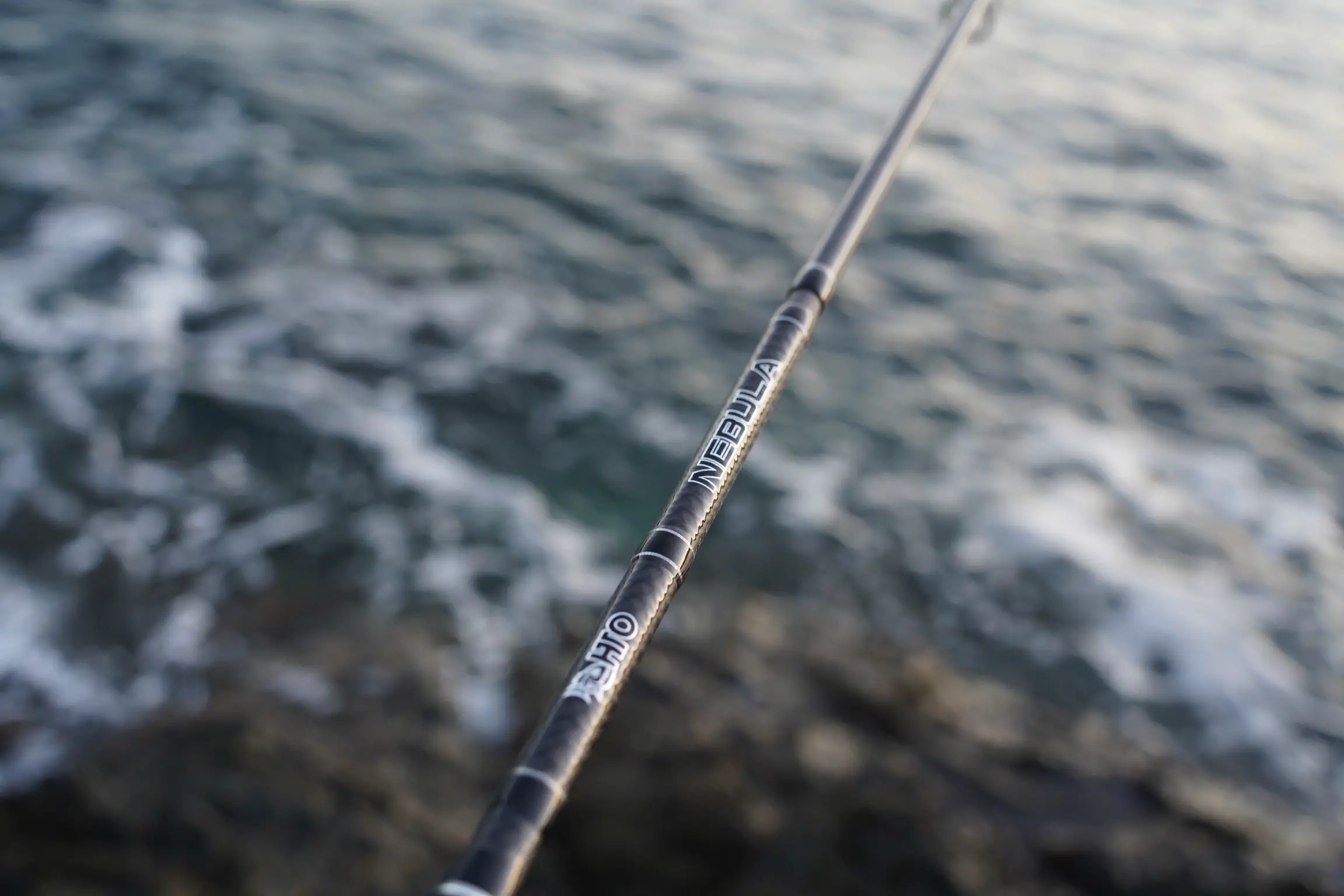
Can I use a travel rod for all my fishing?
Some of the new travel rods are seriously good quality, you almost don’t notice. Predictably the differences get smaller as you spend more.
Another benefit of the travel rod is a lot of rod breakages happen due to car doors or car-related incidents. One of our rods has been a victim to sliding the car seat back a bit too far. A rod being half the size can help you tuck it away out of harm’s way, especially in a loaded-up car driving down the coast. They can also be perfect for public transport, tucked up neatly away in a bag.
Make sure it fits in your bag!
One thing to note, just before you buy the travel rod, make sure it fits in your suitcase! although you should be able to put it diagonally if space is short.

Why you might need a travel rod
Taking a regular fishing rod on holiday can add to the complexity of the trip. It’s another thing to pack, you have to drop it at a different place, it’s a weird shape so it’s another thing to lose, then you’ve got to pick it up from a different part of the airport, and the list goes on. With a travel rod, you can often put it in your hold luggage, and you’re good to go.
What are the potential cons?
Generally, with travel rods, there is a trade-off that has got to be made between the strength and sensitivity of the rod vs convenience. This does vary brand by brand. Some travel rods from brands are known to be stronger than the non-travel rod version. The higher-end travel rods can be almost indistinguishable from the normal two-piece rods. There are four main drawbacks:
Feels heavy
Strangely two-piece rods are usually lighter than one-piece rods, but due to the weight distribution, one-piece rods feel lighter. This is inevitable due to the additional strengthening required around each extra joint, meaning there is more weight nearer the tip. This effect is amplified in cheaper rods. It varies greatly depending on the manufacturer, with some rods it’s not really noticeable.
Loss of strength
Each joint in the fishing rod adds another point of weakness. This can be caused by material like sand getting in the joint, wearing away the rod. Most of this can be mitigated by proper care with your tackle. Basically a quick rinse-off, and not putting your rod in the sand pretty much solves this.
Loss of sensitivity
This is due to some of the vibrations that transmit bites being lost in the joint. So the more joints, in theory, the less sensitive the rod will be. This again varies by the brand of the rod. Two-piece rods can generally provide all the sensitivity you need. We’ve been using the HTO Nebula 4 Piece travel rod and that is pretty darn sensitive.
Flat spots
This is more of a problem on the budget end rods. This is when the rod does not bend with the rest of the rod, creating ‘flat spots’. This would generally occur around the joints. This puts additional strain on the rod. This flat-spot effect diminishes in the better-built, more expensive rods.
Telescopic vs multi-piece rods
Multisection rods are superior in almost all cases, however, telescopic rods win on convenience. They pack smaller and can transport the rod set up more easily.
Multi-section rods have better action, are stronger, and will be more sensitive. Telescopic rods are particularly prone to breaking. We’d almost always recommend you get a multisection rod over a telescopic. If you are just a very casual angler and the slightly smaller size is essential, a telescopic rod might be preferable.
A word from world travelling lure angler, Bram Vangindertael:
We got in touch with Bram, a Belgian lure fisherman that has fished all around the world from his backpack. To get to the point, he told us that he likes PENN travel rods, finds them to be robust and hasn’t had one snap yet. He sticks the in his hold luggage and says clothes are cheap to buy, but good fishing kit is tricky to find, so he just brings less clothes to fit his rod and reel. He also gave some tips for fishing abroad.
“I do my research on instagram. I try to contact local fisherman and see if they have time to fish a session with me. Fishing stores are also helpful and when you are on site just talk to the locals. Google maps and Navionics are really helpful in finding good spots. And of course – if you go sea fishing, I plan my trips according to the tides and moon phase.”
Surf fishing for big bass with Grant Woodgate
Surf fishing for big bass with Samson Lures | Masterclass with Grant Woodgate Few people…
The best braided fishing lines, ranked
The best braided fishing lines, ranked We look at the best braids, from the budget…
The best bass rods | Finding your next stick
The best bass rods | Finding your next stick The most common bass fishing setup…
The UK’s Best Bass Lures
The UK’s Best Bass Lures Let’s start by looking at the three bass lures that…
The Ideal Lure Fishing Set-Up
Lure fishing set ups, everything you need. In this article, I will recommend specific rods,…
Rock Fishing with Lures
Rock Fishing with Lures You’re sat, perching on a rock below a colony of cormorants….

